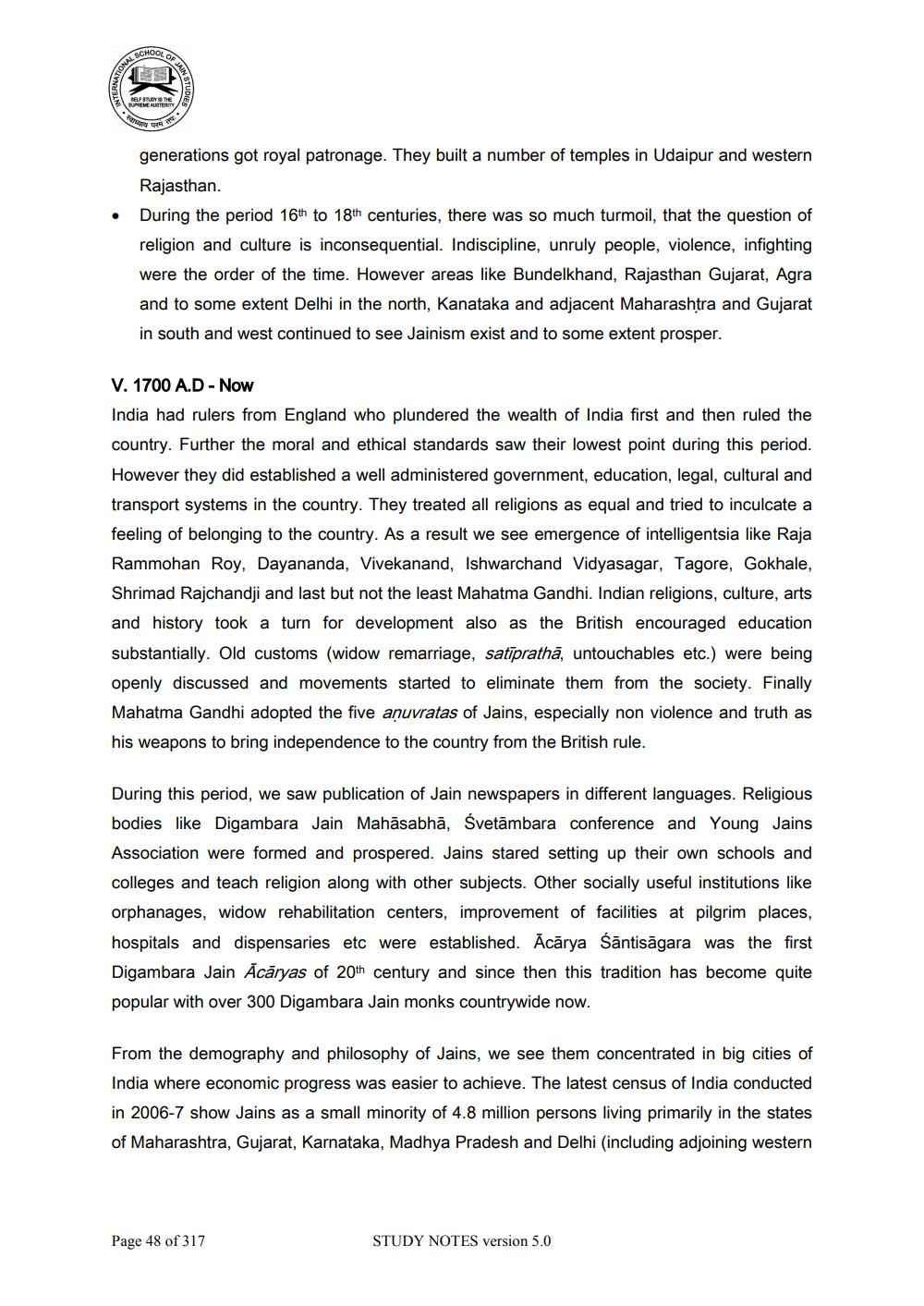________________
•
SCHOOL
TIONAL
OF
SELF STUDY IS THE
SUPREME AUSTERITY
N STUDIES
generations got royal patronage. They built a number of temples in Udaipur and western Rajasthan.
During the period 16th to 18th centuries, there was so much turmoil, that the question of religion and culture is inconsequential. Indiscipline, unruly people, violence, infighting were the order of the time. However areas like Bundelkhand, Rajasthan Gujarat, Agra and to some extent Delhi in the north, Kanataka and adjacent Maharashtra and Gujarat in south and west continued to see Jainism exist and to some extent prosper.
V. 1700 A.D - Now
India had rulers from England who plundered the wealth of India first and then ruled the country. Further the moral and ethical standards saw their lowest point during this period. However they did established a well administered government, education, legal, cultural and transport systems in the country. They treated all religions as equal and tried to inculcate a feeling of belonging to the country. As a result we see emergence of intelligentsia like Raja Rammohan Roy, Dayananda, Vivekanand, Ishwarchand Vidyasagar, Tagore, Gokhale, Shrimad Rajchandji and last but not the least Mahatma Gandhi. Indian religions, culture, arts and history took a turn for development also as the British encouraged education substantially. Old customs (widow remarriage, satiprathā, untouchables etc.) were being openly discussed and movements started to eliminate them from the society. Finally Mahatma Gandhi adopted the five aṇuvratas of Jains, especially non violence and truth as his weapons to bring independence to the country from the British rule.
During this period, we saw publication of Jain newspapers in different languages. Religious bodies like Digambara Jain Mahasabhā, Svetambara conference and Young Jains Association were formed and prospered. Jains stared setting up their own schools and colleges and teach religion along with other subjects. Other socially useful institutions like orphanages, widow rehabilitation centers, improvement of facilities at pilgrim places, hospitals and dispensaries etc were established. Acārya Säntisagara was the first Digambara Jain Acaryas of 20th century and since then this tradition has become quite popular with over 300 Digambara Jain monks countrywide now.
From the demography and philosophy of Jains, we see them concentrated in big cities of India where economic progress was easier to achieve. The latest census of India conducted in 2006-7 show Jains as a small minority of 4.8 million persons living primarily in the states of Maharashtra, Gujarat, Kamataka, Madhya Pradesh and Delhi (including adjoining western
Page 48 of 317
STUDY NOTES version 5.0




